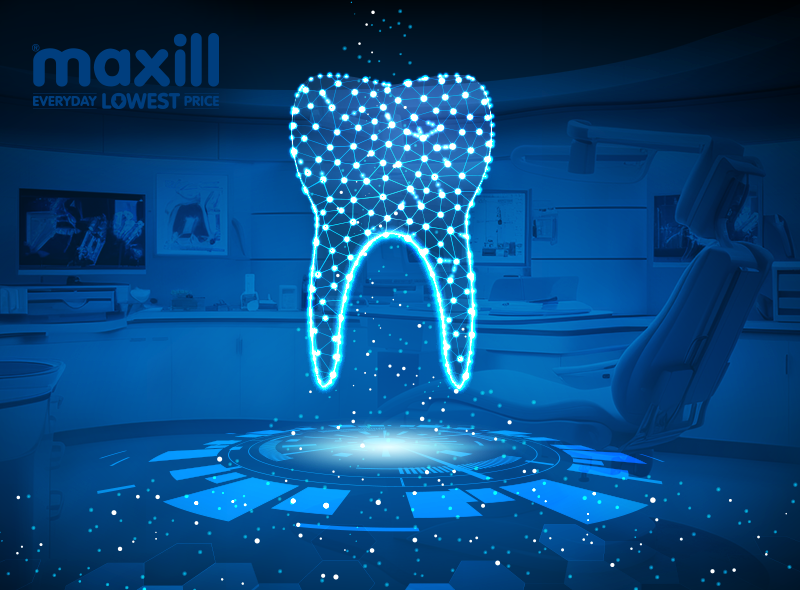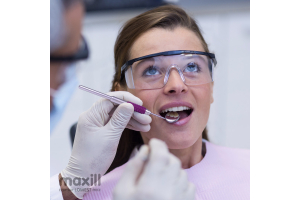Revolutionizing Smiles: The Evolution of Technology in Dentistry

The world of dentistry stands as a testament to the transformative power of technology. From ancient dental practices rooted in rudimentary tools to the contemporary landscape characterized by cutting-edge innovations, the evolution of dental technology has been nothing short of remarkable. Over centuries, advancements in science, engineering, and medicine have revolutionized the way oral health is understood, diagnosed, and treated. This journey of innovation not only reshaped the dentist's toolkit but also significantly enhanced patient care, comfort, and outcomes.
Let's explore this journey through time, tracing the milestones and pivotal moments that have shaped modern dentistry into the dynamic and technologically driven field it is today, along with the advancements and innovations of the future.
Early Innovations
Dentistry's roots trace back to ancient civilizations where early humans tackled dental issues using primitive tools crafted from unconventional materials. These tools, devised from stones, bones, flint, obsidian and even animal teeth, represented the rudimentary yet ingenious solutions for addressing dental issues.
Ancient societies such as the Mayans employed bow drills, a basic yet effective tool used for dental procedures, demonstrating their remarkable early understanding of dental care.
The development of innovative tools like the bow drill marked a turning point in ancient dentistry. It provided a means for tooth extraction and addressing oral ailments with a level of precision that was previously unattainable. The use of these tools, despite their simplicity, reflected the ingenuity and resourcefulness of early civilizations in undertaking dental issues.
In ancient Egypt, another notable advancement emerged: the use of copper dental tools. These tools, made from copper alloy, were utilized for various dental procedures. The durability and malleability of copper made it a valuable material for crafting dental instruments in early civilizations.
As dental care progressed, these early developments paved the way for more sophisticated tools and techniques. The transition from stone and bone tools to the invention of the dental drill in the 18th century signaled a substantial shift in dentistry. The dental drill, initially powered by foot or hand, revolutionized dental procedures, enabling more precise and efficient treatments, and laying the foundation for the technological advancements that followed.
These early innovative tools, though basic in comparison to modern dental instruments, transformed dental practices of their time. They showcased humanity's persistent quest for solutions and set the stage for the transformation of dentistry into the technologically advanced field it is today.
Digital Revolution in Dentistry
The evolution of digital imaging, including 2D and 3D digital imaging (such as Cone Beam Computed Tomography - CBCT), has been a cornerstone in reshaping diagnostic capabilities in dentistry. Early imaging techniques, such as traditional radiographs, provided limited perspectives and involved human intervention that often led to errors during the acquisition and processing phase. Resulting in longer diagnostic times, less comprehensive views of oral structures, and more potential for inaccuracies during diagnosis.
2D Imaging to Digital:
The transition from conventional 2D imaging to digital radiography revolutionized dental diagnostics. Digital X-rays offered enhanced clarity, reduced radiation exposure, and instant image availability. This shift significantly improved the accuracy of diagnostics, allowing for better detection of dental issues, including cavities, infections, and bone abnormalities.
3D Imaging (CBCT):
The arrival of 3D imaging, particularly Cone Beam Computed Tomography (CBCT), marked a groundbreaking leap in dentistry. CBCT technology generates high-resolution, three-dimensional images of oral structures, enabling dentists to visualize detailed anatomical structures from various angles. This level of precision is invaluable for accurate treatment planning in implantology, endodontics, orthodontics, and oral surgeries, surpassing the limitations of conventional imaging methods.
Digital Impressions and CAD/CAM:
Digital impressions have replaced the conventional, often uncomfortable, and error-prone methods involving physical molds. Traditional impressions use a material that captures a negative replica of the teeth and surrounding oral structures. Utilizing advanced imaging technology, digital scanners capture precise 3D impressions of patients' teeth and oral tissues. These digital impressions seamlessly integrate into Computer-Aided Design and Computer-Aided Manufacturing (CAD/CAM) processes.
CAD/CAM technology enables the design and fabrication of dental restorations like crowns, bridges, and veneers with unparalleled accuracy and efficiency. Dentists can design and create customized restorations in a shorter timeframe, reducing chair time for patients and minimizing the need for multiple office visits. This shift from traditional, labor-intensive fabrication to computer-guided manufacturing has revolutionized dental workflow and productivity.
Technologies That Enhance Diagnosis and Treatment in Modern Dentistry
Advanced Diagnostic Tools:
The integration of cutting-edge diagnostic technologies has revolutionized dental practices, significantly enhancing precision and early detection of oral health issues. Intraoral cameras offer detailed visualizations of oral structures, aiding in patient education and treatment planning. Special designed diagnostic lights such as the maxill oracue examination penlight, use LED light to aid in diagnosing tooth fractures, detecting carious lesions, and assist in locating difficult to see endodontic canals. Furthermore, diagnostic lights like VELscope, utilize fluorescence visualization, and have transformed early oral cancer detection, allowing for timely interventions and improved outcomes compared to traditional examinations that only involved visual and tactile examinations.
Dental microscopes provide magnification and illumination, enabling dentists to execute intricate procedures with enhanced precision. Apex locators, replacing the use of traditional radiographs to locate the apices of a tooth, accurately determine the root canal's working length, minimizing errors, and improving endodontic treatments.
Advancements in Treatment:
In treatment modalities, clear orthodontic aligners have transformed orthodontics, offering patients discreet and comfortable alternatives to traditional braces. The use of various bone grafting techniques, including autogenous, allografts, and synthetic grafts, has revolutionized bone regeneration, aiding in implantology and restorative dentistry.
Moreover, the application of membranes in oral surgeries has accelerated tissue regeneration and guided bone regeneration processes. Dental implants, become the standard for tooth replacement, providing stability and functionality like natural teeth.
Progression of Dental Anesthesia:
The development of dental anesthesia has played a pivotal role in enhancing patient comfort during procedures. From ancient practices without anesthesia to the arrival of local anesthetics in the late 19th century, dental anesthesia has continually improved. The introduction of various forms of sedation dentistry, including oral sedation, IV sedation, nitrous oxide, and even general sedation has transformed the patient experience, alleviating fear, anxiety, and discomfort.
The Future of Technology in Dentistry
Artificial Intelligence
As technology continues to evolve, the horizon of dentistry brims with promising advancements set to redefine diagnostics, treatments, and patient care. Artificial intelligence (AI) emerges as a beacon, promising highly efficient diagnostic tools. AI-driven software, trained on vast datasets, assist dental practitioners in accurately identifying and analyzing oral health issues from imaging results. These tools not only expedite diagnosis but also augment precision, empowering dentists with comprehensive insights for tailored treatment plans.
AI in dentistry has proven to have impressive accuracy rates, rivaling, or even surpassing the diagnostic precision of dental practitioners in various domains. For instance, AI algorithms demonstrate exceptional performance in detecting and identifying anatomical structures like teeth from radiographs, showcasing a precision rate of 95.8-99.45%. In carious lesion detection these algorithms achieve accuracies ranging from 75.5% to 93.3% in 3000 periapical radiographs, notably surpassing the sensitivity levels of clinicians, which vary from 19% to 94%.
Their application extends to orthodontics, displaying accuracies of 80-93% in determining the necessity for tooth extraction before orthodontic therapy. In periodontics, AI exhibits accuracies of 90-98% in distinguishing between aggressive and chronic forms of periodontitis, utilizing immunologic parameters.
Furthermore, AI’s diagnostic speed proves exceptional, diagnosing critical maxillary tumors in a fraction of the time taken by specialists, achieving comparable specificity and accuracy rates of 81.8% and 83.3%, respectfully, against specialists’ 83.2% and 82.9%. These advancements underscore AI’s potential to significantly enhance diagnostic capabilities in dentistry, offering expedited and precise assessments across various dental fields. [i]
3D Printing
The use of 3D printing in dentistry stands as a groundbreaking frontier. Presently used for creating dental crowns, restorations, and orthodontic appliances, 3D printing is expanding its repertoire to include on-demand fabrication of personalized dental prosthetics within dental practices. This technology streamlines the production process, enabling quicker turnaround times for patients and offering a more cost-effective solution. Moreover, its capacity for intricate details in design enhances the precision and customization of dental restorations, ensuring optimal fit and function.
Nanotechnology
Nanotechnology’s integration into dentistry had led to transformative advancements in various areas. It enhances dental materials like composites and ceramics by incorporating nanoparticles such as silica, zirconia, and titanium dioxide, improving their durability and strength. Additionally, nanotechnology facilitates the development of dental implants with nanostructured surfaces, fostering better integration with natural bone tissue for enhanced osseointegration. Moreover, nanoparticles serve as carriers for targeted drug delivery to sites of dental infections or inflammations, improving treatment efficacy while minimizing systemic side effects. Nano sensors enable real-time monitoring of oral health by detecting pathogens in the mouth, allowing for timely intervention and disease prevention. These applications signify the signification impact of nanotechnology on improving dental care across multiple fronts.[ii]
Conclusion
Throughout the decades of dentistry, a mesmerizing metamorphosis has occurred, a journey from the rudimentary tools of ancient civilizations to the sophisticated, technology-driven landscape defining modern dental practice. From bow drills and copper instruments wielded by early societies to the revolutionary dental drill of the 18th century, each innovation marked a significant stride in the relentless quest for better oral health.
The digital revolution reshaped diagnostic ability, ushering in a new era of clarity and precision. The transition from conventional 2D imaging to digital radiography and the dawn of 3D imaging with Cone Beam Computed Tomography (CBCT) signaled an era of unparalleled insight into oral structures. Digital impressions and CAD/CAM technology further streamlined and personalized treatment processes, revolutionizing the way restorations were designed and fabricated.
As technologies grew rapidly, so did the precision and efficacy of diagnostics and treatments. Intraoral cameras, diagnostic lights, and dental microscopes became integral, offering enhanced visualizations and enabling intricate procedures with exceptional precision. Innovations like clear aligners, advanced bone grafting techniques, and dental implants not only transformed specific fields but also redefined patient experiences, comfort, and outcomes.
The progression of dental anesthesia, from ancient practices to the array of sedation techniques available today, has significantly alleviated patient anxiety and discomfort, further enhancing the overall dental experience.
The future of technology in dentistry promises a seismic shift propelled by artificial intelligence (AI), 3D printing, and nanotechnology. AI's potential to augment diagnostic precision and speed is unparalleled, showing remarkable accuracy rates in identifying various oral health issues. Meanwhile, 3D printing's expanding capabilities, from dental restorations to personalized prosthetics, herald a new era of on-demand, precision driven solutions within dentistry. Nanotechnology's integration promises enhanced materials, implants, targeted drug delivery, and real-time monitoring, revolutionizing dental care across multiple fronts.
This journey through time in dentistry stands as a testament to human ingenuity and innovation. With each advancement, from ancient resourcefulness to contemporary breakthroughs and future possibilities, dentistry not only evolves in tools and techniques but fundamentally transforms the quality of care, reshaping the experiences and outcomes for both patients and practitioners. As the horizon of dental technology continues to expand, the transformative power of innovation will undoubtedly continue to redefine the landscape of oral healthcare, promising a future where precision, comfort, and efficacy converge to elevate the standard of care for generations to come.
[i] Use of Artificial Intelligence in Dentistry: Current Clinical Trends and Research Advances. In: J Can Dent Assoc. Nguyen, Larrivée, Lee, Bilaniuk; 2021;87:17. Accessed January 3, 2024. https://pubmed.ncbi.nlm.nih.gov/34343070/
[ii] Nanotechnology in Dentistry. In: Royal Dental Clinics Blog. Singh; 2023. Accessed January 3, 2024. Nanotechnology in Dentistry - Royal Dental Clinics Blog (royalimplant.com)







